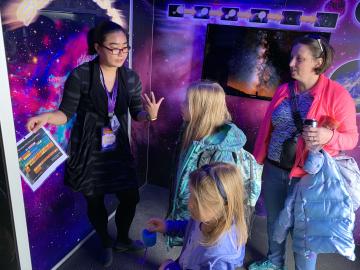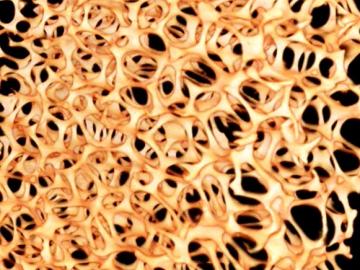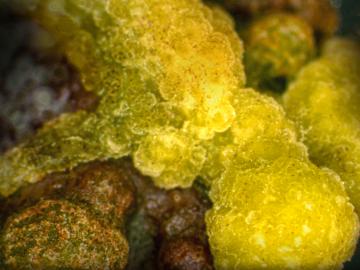Filter News
Area of Research
- Advanced Manufacturing (4)
- Biological Systems (1)
- Biology and Environment (3)
- Building Technologies (1)
- Clean Energy (70)
- Climate and Environmental Systems (4)
- Computational Engineering (1)
- Computer Science (7)
- Fusion Energy (4)
- Materials (51)
- National Security (3)
- Neutron Science (25)
- Nuclear Science and Technology (13)
- Quantum information Science (2)
- Renewable Energy (2)
- Supercomputing (36)
- Transportation Systems (1)
News Type
Date
News Topics
- 3-D Printing/Advanced Manufacturing (11)
- Advanced Reactors (6)
- Artificial Intelligence (9)
- Big Data (7)
- Bioenergy (5)
- Biomedical (3)
- Biotechnology (1)
- Clean Water (4)
- Composites (1)
- Computer Science (27)
- Critical Materials (1)
- Cybersecurity (1)
- Energy Storage (7)
- Environment (16)
- Exascale Computing (1)
- Fusion (3)
- Grid (4)
- Machine Learning (4)
- Materials Science (10)
- Mercury (2)
- Microscopy (2)
- Molten Salt (1)
- Nanotechnology (3)
- Neutron Science (12)
- Nuclear Energy (14)
- Physics (3)
- Polymers (1)
- Quantum Science (5)
- Space Exploration (4)
- Summit (6)
- Sustainable Energy (3)
- Transportation (10)
Media Contacts

ORNL researchers created and tested new wireless charging designs that may double the power density, resulting in a lighter weight system compared with existing technologies.

A team of scientists found that critical interactions between microbes and peat moss break down under warming temperatures, impacting moss health and ultimately carbon stored in soil.

Researchers demonstrated that an additively manufactured hot stamping die can withstand up to 25,000 usage cycles, proving that this technique is a viable solution for production.

Elizabeth Herndon believes in going the distance whether she is preparing to compete in the 2020 Olympic marathon trials or examining how metals move through the environment as a geochemist at the Department of Energy’s Oak Ridge National Laboratory.

In the vast frozen whiteness of the central Arctic, the Polarstern, a German research vessel, has settled into the ice for a yearlong float.

Scouts from around East Tennessee learned about supercomputing, electricity, isotopes, physics, and much more at Oak Ridge National Laboratory’s final Traveling Science Fair event of 2019

Two of the researchers who share the Nobel Prize in Chemistry announced Wednesday—John B. Goodenough of the University of Texas at Austin and M. Stanley Whittingham of Binghamton University in New York—have research ties to ORNL.

The type of vehicle that will carry people to the Red Planet is shaping up to be “like a two-story house you’re trying to land on another planet.

Researchers at Oak Ridge National Laboratory demonstrated that metal foam enhances the evaporation process in thermal conversion systems and enables the development of compact HVAC&R units.

Researchers at Oak Ridge National Laboratory will present eight innovative technologies currently available for commercialization during a public event at ORNL on October 17.




